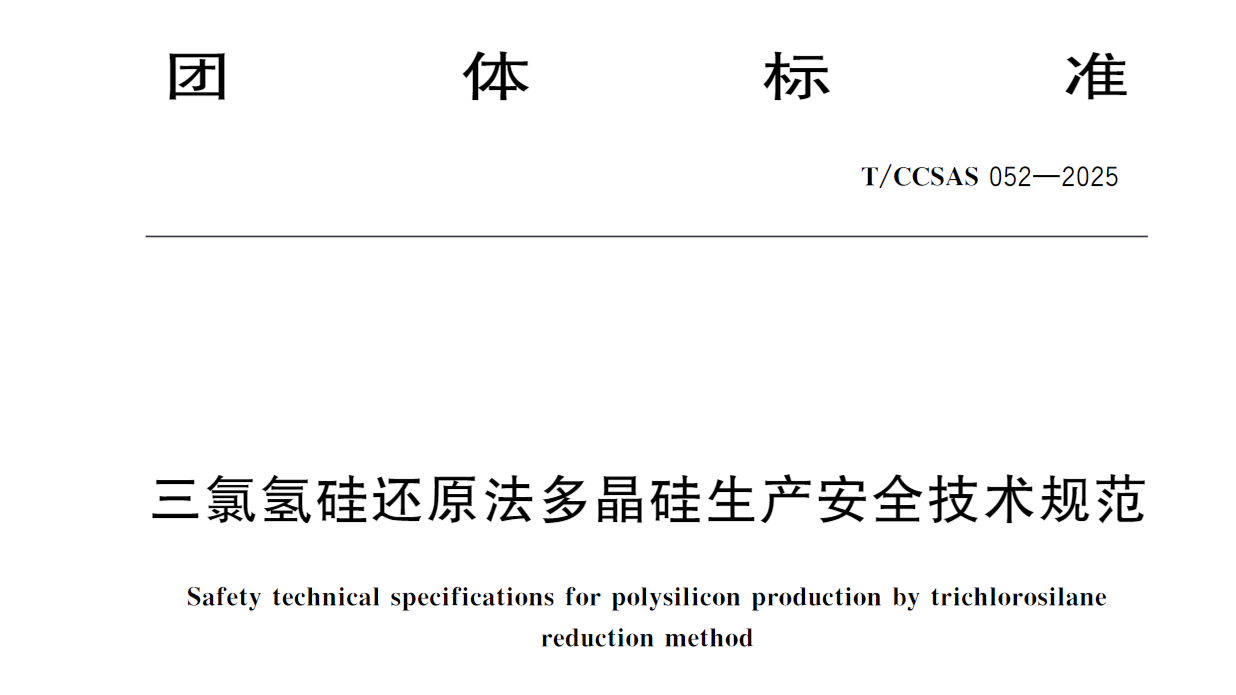“Safety Technical Specifications for Polysilicon Production by Trichlorosilane Reduction Method ”Has Been Released and Implemented
Led by the China Chemical Safety Association (CCSA), China Association of Fluorine and Silicone Industry, Sichuan Yongxiang Co., Ltd., Jiangsu Zhongneng Silicon Technology Development Co., Ltd., Xinjiang Daquan Energy Co., Ltd., Hesheng Silicon Industry Co., Ltd. compiled the group standard“Safety technical specifications for polysilicon production by trichlorosilane reduction method” (T/CCSAS 052-2025), which was was issued and implemented on March 3rd.
Based on domestic and international regulations, standards, industry practice and experience, and the current technologies, the standard puts forward specific requirements in design and layout of the general plan, safety production and the exhaust gas washout during the whole process of polycrystalline silicon production by reduction of trichlorosilane, aiming to provide scientific and systematic safety management guidance for companies producing polysilicon. It is expected to reduce the safety risks in the production, and to enhance the industry’s overall safety.
Currently, the rapid development of photovoltaic industry increases the demand for polysilicon as the core material of solar cells. Trichlorosilane reduction method is currently one of the mainstream silicon material production technologies. However, due to its complex production process involving high temperature, high pressure, and corrosion, there are high safety risks.
The process of producing polysilicon by trichlorosilane reduction involves flammable, explosive and corrosive materials such as hydrogen, hydrogen chloride, trichlorosilane and silicon tetrachloride. Hydrogen chloride will form highly corrosive hydrochloric acid in contact with water, and chlorosilanes will hydrolyze to form hydrogen chloride when leaking in contact with water, which is highly corrosive. In addition, polysilicon production process also involves hydrogen and silica dust. Hydrogen mixed with air can produce explosive mixtures, and it will explode in contact with heat or open flame. Silica dust contacting with air is also prone to dust explosion.
In recent years, accidents in domestic and foreign polysilicon production companies, due to inadequate safety management, are common. The development of a set of safety regulations for polycrystalline silicon production by reduction of trichlorosilane has become an urgent need in the industry.
